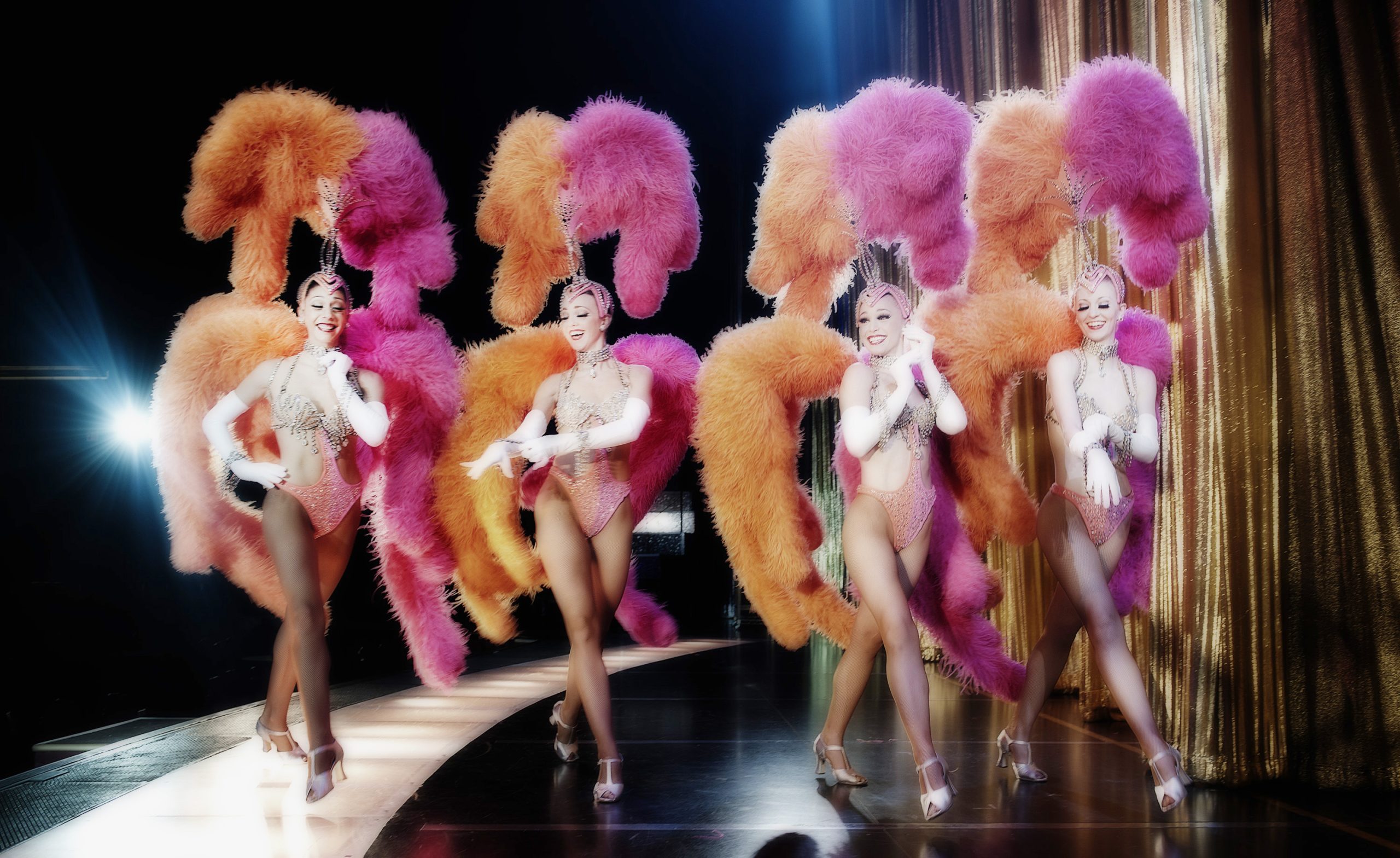Re-shattering the Vegas myths: Showgirls still dance on the strip

Published on: January 12, 2024 at 08:04 pm.
Last updated on: January 11, 2024, 10:22 pm.
Editor’s note: Vegas Myths Busted now publishes new entries every Monday, with an additional Flashback Friday release. Today’s post in our ongoing series originally ran on October 14, 2022.
One important thing to know about real showgirls is that they are elite athletes trained in classical dance and perform nightly in musical shows on the Las Vegas Strip.

Another important thing to know about real showgirls is that they no longer exist. That hasn’t happened since 2016, which is when the last Vegas showgirl, “Jubilee!” At Bally’s, it closed after 35 years.
All the showgirls you currently see along the sidewalks of the Las Vegas Strip are either paid models or street performers posing for photo shoots in exchange for tips.
The idea that there is still full-time work for women who wear glamorous clothes and heavy headdresses is a myth. It is a myth whose continuity can be understood. Last August, when the city of Las Vegas saw fit to replace the two 25-foot parade signs that welcomed visitors downtown, what did they replace? two 50 feet Signs of a showgirl.
How did the showgirl become extinct?
From the 1950s through the 1980s, almost every major casino had a showgirl show. Tropicana had “Folies BergereBali had “Jubilee!” Stardust had “Lido de Paris.” The Desert Inn had “Pzazz!” The Dunes had “Paris Casino.” The MGM Grand had “Hallelujah Hollywood.” Most featured These items are topless, but that was never the main attraction.
“Their inspiration was from Parisian cabaret shows,” Diane Palme, former “Jubilee!” said the dancer, dance captain and company director Casino.org. “The showgirl shows were artistically beautiful and added a taste of extravagance, fantasy and spectacle. Like the big MGM musicals in Hollywood, they were extravagant, extravagant shows with lots and lots of singing and dancing performers. In addition to the showgirls, they had dancers, singers, lead performers and specialty shows.” Orchestras or live bands.
Some internet experts blame the demise of the showgirl on woke culture and its opposition to oppressive female stereotypes. Others say it’s because the era of big Hollywood musicals has gone the way of the dodo (to quote a phrase that was once popular but went the same way).
While there is some truth to both ideas, what led to the extinction of the showgirl was the privatization of the Las Vegas Strip. Once power shifted from the sometimes mafia-backed millionaire casino owners to the CEOs of shareholder-owned corporations, the countdown to the final curtain began.
Hotels financed showgirl shows, and they weren’t cheap. They cost up to $10 million per show to design, and with their unions numbering in the hundreds, a million dollars or more annually for the show. And this was in the seventies!
“We had a crew of 128 artists when we opened for Jubilee!” Palm recalls. “Pete Minifie only designed 20 dresses for the Titanic series, and those 20 dresses cost $250,000. We had jewelry imported from Europe that was designed and made in Paris, by major jewelers. We had feathers from all over the world,” she said. “It wasn’t the money.” An obstacle.”
When money became an object
Until the early 1980s, hoteliers never asked for showgirl shows to recoup what they spent on them. They were considered loss leaders, and their real goal was to attract gamblers to the casinos and keep them there. At that time, gambling still represented about 75% of the average casino’s revenue. That’s why several female members of each showgirl show audience were prepared – as were drinks, meals and hotel rooms.
Today, that revenue stream has flipped, with non-gambling sources accounting for 75%. Instead of paying to perform, in the 1980s label owners decided to make independent producers pay they To rent their showrooms.
Once many Vegas shows became “four-walled”—having to pay for themselves entirely through their box office sales—no producer volunteered to put on a showgirl show. Instead, they mainly brought what Vegas is still known for today: musical residencies for stars, traveling companies of proven Broadway productions, and the exotic wonders of Cirque du Soleil.
The last of the showgirl bastions?
It’s safe to say the showgirls are still dancing healthily to the tape at “Vegas The Show” at the 423-seat Saxe Theater in the Miracle Mile shopping center. But this production only uses a few showgirls in a few of its songs to show showgirls in their historical Vegas context, much as natural history museums do with other extinct animals.
It can also be said that the showgirl continues to try to update its image with sexy dance production numbers by younger stars Britney Spears, Jennifer Lopez, and Gwen Stefani, whose recent residency featured female backup dancers dressed as French showgirls.
But according to Palm, these are weak arguments.
“You can dress up as showgirls, but it’s not the same as performing in productions that have been a rich part of Las Vegas’ cultural history.
“This tradition has ended,” she added.
Look for “Vegas Legends Busted” every Monday Casino.org. Visit VegasMythsBusted.com to read previously busted Vegas myths. Do you have a suggestion for a Vegas legend that needs busting? Email corey@casino.org.





